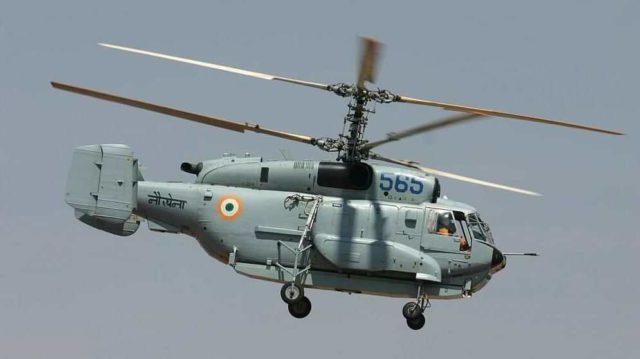
Chinese anti-sub helicopter enters Taiwan ADIZ for first time 585 Kamov KA.28 (Aeroprints.com/WikiCommons)
This article was originally published by Radio Free Asia and is reprinted with permission.
A Chinese anti-submarine helicopter was spotted inside Taiwan’s air defense identification zone (ADIZ) for the first time this week, the island’s Ministry of National Defense said.
The ministry said in its regular briefing note that a KA-28 ASW helicopter was seen flying within the southwestern sector of the ADIZ on Wednesday but didn’t provide details of the flight path.
On the same day, an Y-8 electric intelligence aircraft (Y-8 ELINT) and an Y-8 long-range electronic warfare aircraft (Y-8 EW) were also spotted entering Taiwan’s ADIZ.
An ADIZ is an area where civilian aircraft are tracked and identified before further entering into a country’s airspace.
The sorties took place just a few days after the United States announced its new Indo-Pacific strategy, in which it outlined “maintaining peace and stability across the Taiwan Strait” as one of the priorities.
U.S. Assistant Secretary of State for the Bureau of East Asian and Pacific Affairs Daniel Kritenbrink reiterated in a telephone press conference to discuss the new strategy on Thursday that the “U.S. support for Taiwan is rock solid.”
“We will continue to assist Taiwan in maintaining credible self-defense,” he said.
Earlier this month, the U.S. approved a possible $100 million sale of equipment and services to Taiwan to “sustain, maintain, and improve” its Patriot missile defense system, provoking an angry reaction from Beijing.
The Chinese Foreign Ministry quickly condemned the deal, saying it “seriously violates the one-China principle” and “damages China’s sovereignty and security interests.”
China maintains that Taiwan is a Chinese province and pledges to “reunite” it with the mainland, by force if needed.
‘Insufficient response’
Since the beginning of the year, the Taiwanese Ministry of National Defense has reported a total of 173 Chinese military planes entering the island’s ADIZ.
The Global Times – the hawkish sibling of Chinese Communist Party’s mouth-piece People’s Daily – claimed in an editorial last month that “it has become normal for PLA warplanes to fly around Taiwan and approach the island for patrols.” PLA stands for China’s People’s Liberation Army.
The Taiwanese defense ministry has confirmed that on Feb. 5 a Chinese civilian aircraft flew closely to Dongyin island, a strategic location on Taiwan’s defense map.
The ministry’s spokesperson, Shih Shun-wen, told reporters the flyby was likely “to test the response of our military.”
Dongyin is part of the Matsu archipelago, 50 kilometers (30 miles) east of China’s Fujian province. The Matsu islands have been under Taiwan’s control since the end of the Chinese Civil War in 1949.
It is “Taiwan’s northernmost point and a strategic base … Dongyin is solid granite, full of tunnels and bunkers packed with long range missiles,” Ian Easton, Senior director at the Project 2049 Institute, a U.S. think-tank, described the island on his Twitter page.
The Air Force Chief of Staff Huang Chih-wei was quoted in Taiwanese media as saying that the aircraft was a civilian Y-12 light twin-engine plane, which came near Dongyin, but did not enter Taiwanese airspace.
Project 2049’s Easton said the flyby was “classic political warfare.”
“Chinese authorities sent a civilian aircraft over one of the most dangerous and heavily fortified islands on the planet,” Easton wrote.
“If Taiwan shoots, it provokes an armed response. If Taiwan shows restraint (which it did), it looks and feels weak.”
Shen Ming-Shih, a Taiwanese military expert, said that although the Taiwanese air force quickly learned about the aircraft’s flight trajectory, “it was insufficient in response.”
Shen, acting deputy chief executive officer at Taiwan’s Institute for National Defense and Security Research, a government think-tank, said it was “China’s testing the outlying islands in the northwest of Taiwan” in order to gather intelligence and information for future attacks on the island.
“Taiwan must take it seriously and take military precautions,” he said.




